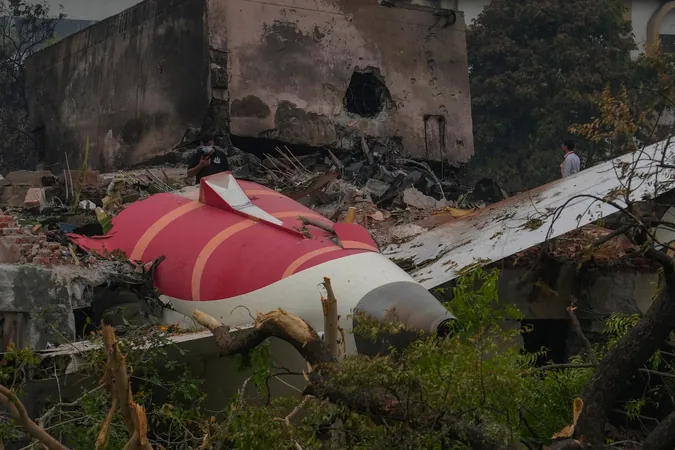
Mystery of Seat 11A: Did It Really Save the Sole Air India Crash Survivor? Experts Weigh In!
2025-06-13
Author: Emily
The miraculous survival of a passenger from the recent Air India flight crash has ignited a debate over whether his seat, 11A, was the secret to his escape. While he managed to flee moments after the disaster that tragically claimed the lives of all others on board, experts suggest the reality is far more complex.
Aviation authorities emphasize that survival isn't simply a matter of seat location. Mitchell Fox, director at the Flight Safety Foundation in the U.S., notes, “Every aviation accident is distinct, and it’s impossible to predict survival based solely on where you're sitting.”
The fortunate survivor, Viswashkumar Ramesh, occupied 11A, conveniently located next to an emergency exit on the doomed Boeing 787 Dreamliner. Although it proved advantageous for him, experts stress that every aircraft has different seat layouts, making 11A just one of many potentially safe seats.
Ron Bartsch, chairman of AvLaw Aviation Consulting, adds, “In this case, the passenger's close proximity to the emergency exit certainly played a role, but it’s essential to understand that it won’t always be seat 11A in other circumstances.”
Interestingly, a study by Popular Mechanics from 2007 revealed that passengers seated toward the rear of an aircraft often have better chances of survival. Some experts believe that seats near the wings provide increased stability during a crash.
Ramesh’s position by the exit provided a swift escape route; however, factors such as the exit operation and the aircraft’s collision with a building also played crucial roles. When the plane impacted, one side was rendered inaccessible.
Past incidents highlight the unpredictability of seat safety. For instance, a severe incident involving a Boeing 737 MAX resulted in a massive hole mid-flight that fortunately did not affect any seated passengers, underlining that escape chances can dramatically vary.
Choosing an aisle seat might seem like a smart move for a quick exit, but it comes with risks too, such as being injured by falling luggage—a far more common threat than plane crashes.
The best advice for improving survival odds still lies in attending the crucial safety briefings at the start of flights. Compliance with evacuation protocols, like leaving bags behind, has previously led to successful escapes, as evidenced by the lives saved on a Japan Airlines flight last year.
In recent airplane designs, safety measures have significantly advanced. Features like illuminated floor paths and fire detection systems have enhanced survival rates by making emergency exits more accessible and minimizing fire hazards.
As astounding advancements in aviation continue, the hope is that the tragic nature of aircraft accidents will diminish, allowing more passengers to walk away unscathed.









 Brasil (PT)
Brasil (PT)
 Canada (EN)
Canada (EN)
 Chile (ES)
Chile (ES)
 Česko (CS)
Česko (CS)
 대한민국 (KO)
대한민국 (KO)
 España (ES)
España (ES)
 France (FR)
France (FR)
 Hong Kong (EN)
Hong Kong (EN)
 Italia (IT)
Italia (IT)
 日本 (JA)
日本 (JA)
 Magyarország (HU)
Magyarország (HU)
 Norge (NO)
Norge (NO)
 Polska (PL)
Polska (PL)
 Schweiz (DE)
Schweiz (DE)
 Singapore (EN)
Singapore (EN)
 Sverige (SV)
Sverige (SV)
 Suomi (FI)
Suomi (FI)
 Türkiye (TR)
Türkiye (TR)
 الإمارات العربية المتحدة (AR)
الإمارات العربية المتحدة (AR)